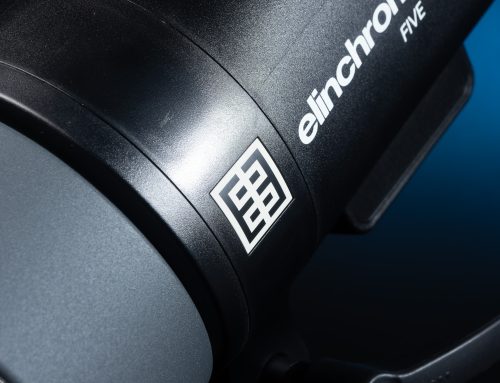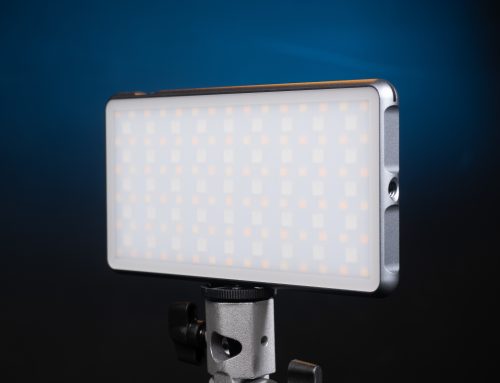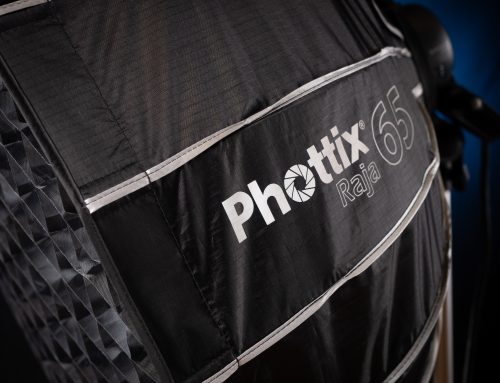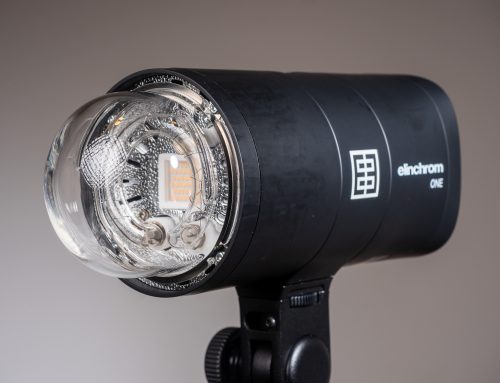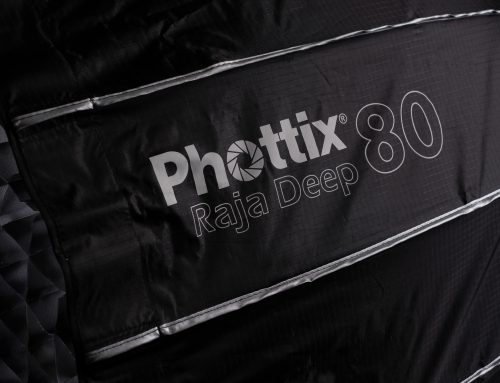Review Elinchrom Rotalux Go 55x75cm

I tend to keep my softboxes for quite a few years. I’ve found choosing carefully in the first instance, can pay dividends in the long run. It tends to mean I don’t often feel the need to shop for a new ‘box, although my wife will sometimes have other ideas.
Anyway, it wasn’t until fairly recently, I realised I hadn’t replaced a small softbox I regularly used for smaller product photography. I think it was one of the 60x60cm wire framed folding softboxes. You know the sort. Anyway, it also dawned on me that almost all my softboxes were generally round, ranging in size from my fairly new Phottix Raja 65cm Hexa, right the way through to an Elinchrom 175cm Octa.
My rectangular or square softboxes were another story. Yes, I made use of my Phottix Raja 30x140cm stripboxes pretty much daily, but my smallest square box is an 80x80cm quickfold job, and my smallest rectangular box is something silly like an old Bowens 4’x3′ (122×91.5cm), and it isn’t really a location box, either.
Whilst the above has taken a little time for you to read, it all flashed through my mind when Elinchrom announced the launch of their new Rotalux Go range, aimed at the location photographer, and as soon as they were in stock at The Flash Centre, I had one on it’s way to me. There are currently three models available, which are the strip (35x75cm), the octa (60cm) and the recta (55x75cm), which is the model I’ll focus on. (Mainly because it’s the one I have).

The first thing I noticed, was the quality of the materials. The second thing I noticed was the fact a honeycomb/grid is provided. I tend to be put off if there isn’t at least an optional honeycomb/grid available, as I find it such a pivotal tool in my own lighting style.

The honeycomb grid isn’t a cheap add on, either. The fabric is slightly thicker than others I’ve handled, and it sits well along the walls of the ‘box.

The front diffusion panel is a dead fit, and secures really well along all four sides. The material of the diffusion panel is different to Elinchrom’s much older models, but feels more robust.

The inner diffusion panel is anchored by velcro straps in each corner, and is of the same material as the outer panel.

The ribs are connected the outer ring of the mount, and opened into position when the lock mechanism is pushed down onto the rod and locked into position. Sounds easy, doesn’t it? The rod is barely longer than the locking ball, which means the lock has to be pushed pretty much home, before it will engage. I don’t mind telling you, it took me a few goes to get the hang of it, as it creates a lot of tension in the skin of the ‘box as it becomes erect. The tradeoff is the fact you have a very rigid softbox once it’s up, but I did find it a bit of a workout to get it there. It has become easier over time, which I think is more to do with the ‘box relaxing a little.

This is a close up of the locking ball. It’s much easier to erect and take down when compared to those earlier “Umbrella” type locking mechanism, which was a metal “blade” you had to find by touch etc. With this new ball type, you simply reach in and squeeze the ball, and you will hear a very satisfying pop as it lets go. The ball itself is also ideal when it comes to pushing down when erecting the ‘box, as there is more to put your weight behind.

The mount is shallow enough, that the bulb is seated fairly well forward. This is an ELB500 head with Elinchrom adaptor to the full size Elinchrom mount.

And the view of the mount from outside. You will notice the skin of the box is tightly in place. Very tightly!
I found I had to release the skin around the mount each time I collapsed the ‘box, otherwise it wouldn’t quite fully collapse. Again, it adds to the rigidity of the box when erect. However, the downside to this can be experienced when you withdraw the softbox from it’s case, as the skin can slide forward along the ribs, allowing the rib tips to disengage from the pockets at the corners of the box. This isn’t an issue, as you simply relocate the tip before erecting the box.
Nope, it’s not an issue. You just need to do it every, single, time.
Meh!

Whilst the image above was intended to show the open panel etc, it also shows just how taut the skin is once erect.

The quality of the materials extends to the stitching. I’ve had some boxes let go along stress points after a few years hard use, so the stitching is something I always tend to take a look at.
In Use
As I mentioned earlier, my intended use is small products, requiring close lighting etc.
Snug City sell various forms of textiles, including cushion covers. They had requested some lifestyle imagery, which basically translated to mean they wanted some imagery of their cushion covers in a nice surrounding, rather than on white. They had no need of a model, it was to be just the cushion.
So, I just needed a nice location that could offer a variation of settings. My brother owed me a favour, so I took over his house for a morning. (Sorry John and Kyla).

I used the Recta Go as the key light, as it was small enough not to cause any issue in the sitting room, but threw a nice balance of light without the honeycomb in place. It was placed immediate frame left and at a height of around five feet, aiming down towards the cushion. It was mated to an ELB500 firing at an output of 3.0 (Equivalent to 50Ws).
Frame right, I had another ELB500, firing through a standard 17cm reflector with a 30° grid fitted, at an output of 0.1 (Equivalent to 7Ws). This was almost in line with the cushion, and was used to ensure the texture of the cover is seen, along with the shape and form etc.

Change of setting, and moving into the kitchen. The Recta go was above the camera, with the ELB500 firing at an output of 3.0 (Equivalent to 50Ws). I had placed my accent light frame left, which was the same as before (ELB500 firing through a gridded 17cm reflector at an output of 0.1 (7Ws).

And the (rather rare!) behind the scenes image.
Conclusion
I use a lot of softboxes on location, and I certainly tend to bear that in mind when purchasing any softbox. It has to be quick and easy to deploy, deliver the desired results consistently and also pack up quickly and in a compact form.
The Elinchrom Rotalux Recta Go pretty much ticked all the boxes (Ooooh, a pun!).
It’s certainly compact when packed away. It definitely delivers consistently, and it is extremely rigid in use.
I did find it a little more difficult to erect than some of my other boxes, but I think that’s down to its size, which creates more tension on the rods as you attempt to engage the lock. I also found the skin would slip down the rods as it was placed in the case, which meant a bit of fettling was required the next time it was needed, as the tips of the rods would disengage from the corners of the box.
Honestly? I expect to get into the habit of pushing the rods home as I take it from its case, or change the way I put it away. Whilst it was irksome on the first shoot, it didn’t impact on subsequent shoots.
It’s certainly the first softbox I reach for when needing a keylight for smaller products.

